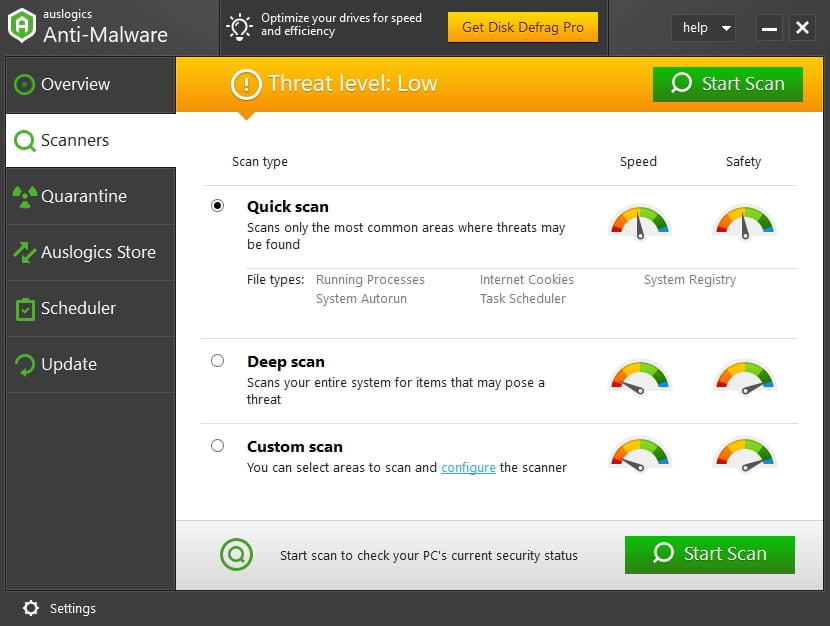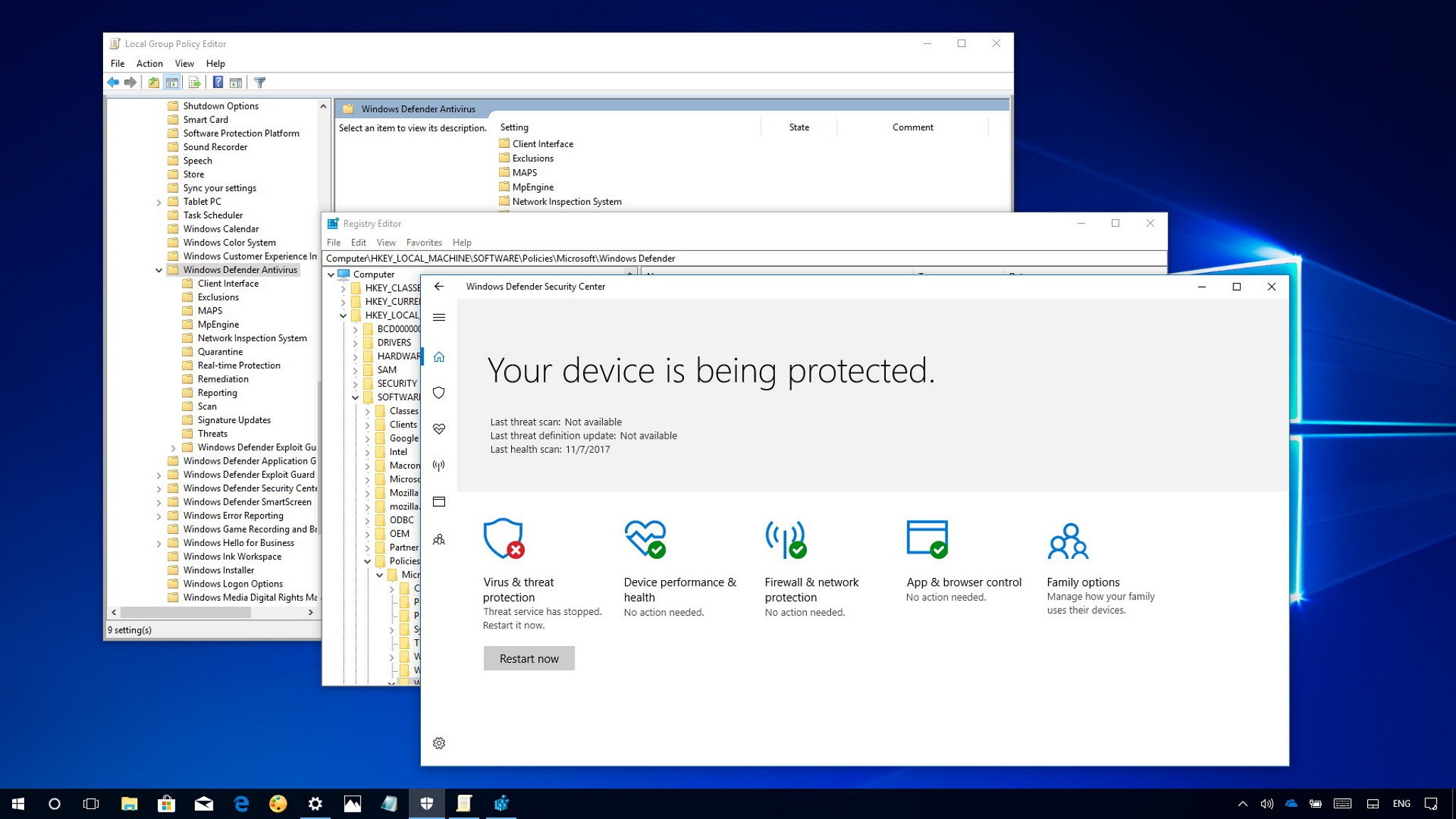Windows Defender Keeps Turning Off Windows 7
Windows update your device is missing. How can the answer be improved? How to Fix Windows Update Error 'Your device is at risk' on Windows 10? Install the Updates Manually. To repair damaged system. Check Date & Time Settings. To repair damaged system. Reset Windows Update Components.

Are you looking for How to Turn Off Windows Defender? So this is the right place where you can learn How to Turn Off Windows Defender in Windows 10. This is a Step by Step Process.If you are searching for How to Turn Off Windows Defender then you are installing some third-party software that is blocked by Window Defender or you are using another antivirus. So, you can not install that app or do some specific tasks without Disabling window defender.Windows Defender is the Security & Antivirus application that helps your desktop or laptop to run better this is a free application that is provided by Microsoft and it is available on all windows version puts in every version of Windows.Here is How to Turn Off Windows Defender in Windows 10There are two ways that you can use to turn off windows defender means disable window defender. If you want to disable windows defender for some time means temporary then follow the first method. If you want to disable windows defender for all time means permanently then follow the second method.1. Windows 10 TweaksPressing “Windows+Pause Break” (it’s up there next to scroll lock) opens the “System” Window.Windows 10: In the new version of Windows, Explorer has a section called Quick Access.
This includes your frequent folders and recent files. Explorer defaults to opening this page when you open a new window. If you’d rather open the usual This PC, with links to your drives and library folders, follow these steps:. Open a new Explorer window.

Click View in the ribbon. Click Options. Under General, next to “Open File Explorer to:” choose “This PC.”.
Click OKcredit to Lifehacker. Windows 10 Anniversary Update IssuesProblems with W10 Anniv auto update:Mom's: (x58 Xeon 5677) Windows Defender was not turned back on automatically (it was 'on' in the 1511 edition) and she had a Trojan. Full system scan to eradicate.Her Epson printer was knocked off, had to uninstall by Device Manager pull USB cable and reconnect cable. W10 did the rest.Step-mom's: (HP pre built) Windows Defender not turned back on by default.
Her USB Seagate Expansion Drive 2Tb was offline so all backup routines were halted. Had to rerun backup plan. Had her do a full virus scan.Step-dad's: (Dell Optiplex tweaked upgrades) Windows Defender not turned back on by default.
Type in Defender into the search bar, and click on the Defender program in the list. When Windows Defender opens, click Settings and turn off real time protection.I just noticed that it will reenable it automatically after some time, geez.I suppose you will could install some third-party antivirus software that does not flag hack tools and such as a threat., but I have not tried it or can vouch for it or what it actually does to accomplish this.I found this note on another website, but I am not sure if it is true or not. Better make a restore point anyway.NOTE: The NoDefender utility doesn’t include an option to enable Windows Defender again. So we suggest you create a manual system restore point before disabling Defender if you want to easily enable Windows Defender again in the future.Another method is to rename the Defender program folder. In Windows 10 Professional, you can disable Windows Defender via the Local Group Policy Editor (gpedit.msc) by enabling the Turn off Windows Defender policy in the following location: Computer Configuration/Administrative Templates/Windows Components/Windows DefenderIn Windows 10 Home, it can also be done via an elevated command prompt: reg add 'HKEYLOCALMACHINESOFTWAREPoliciesMicrosoftWindows DefenderReal-Time Protection' /v DisableRealtimeMonitoring /t REGDWORD /d 1To roll back: reg delete 'HKEYLOCALMACHINESOFTWAREPoliciesMicrosoftWindows DefenderReal-Time Protection'.
This isn't a solution to turn off Windows Defender entirely, but I think it's a better solution to what you're actually looking for. You can turn off Defender's Realtime Protection, without turning off Defender altogether. If you want to be able to use Defender to do on-demand scans (not realtime scanning), then this solution is useful.Open up the registry editor with Start - regedit.Navigate to Computer HKEYLOCALMACHINE SOFTWARE Policies Microsoft Windows Defender.Navigate to Real-Time Protection. If that key doesn't exist, create it under the Windows Defender folder. (note the space between 'Time' and 'Protection').Inside Real-Time Protection, add a new DWORD value.Name it DisableRealtimeMonitoring and give it a value of 1.You may need to reboot.
This will now allow Windows Defender to run on-demand, but if you look in the Defender settings, real-time protection will be turned off and grayed out. Considering your specific goal, do nothing.I could post an answer on how to turn it off, but based on the background you shared, I decided to give a different answer.As you told in comments, you already have an exception added into Windows Defender which allows your software to work as expected.
In your question you did not indicate any performance or compatibility or other issues which in some corner cases can be reason for disabling the protection tool completely.To address only the blocking issues, you have found the proper solution. This is the purpose of exception lists in threat-prevention software and you used it in the right way.
You gave no reason why it is necessary to disable the entire protection instead of adding just one exception.Any weakening of security of your computer is generally only worse. Do not switch off Windows Defender if the problem has a valid working solution (for example, using the exception list).Alternatively you can replace Windows Defender with other protective software, e.g. With an antivirus program or some security suite. (They will turn off Windows Defender, too.) But it may happen that they will cause a conflict with your application, too, and you will end up adding a new item into the exception lists as you did it for Windows Defender. I already received 3 downvotes for this answer, but based on original question which also provided reasoning for disabling the Defender, this answer still stands.

Although there could be valid cases for switching off the Defender, in this particular question, turning off the Defender was solving the actual problem wrong way. It's like when you ask car mechanic for disabling airbags in your car because sometimes 'check airbags' indicator is displayed and you do not like that indicator.–Dec 8 '16 at 13:49. @srchulo – In case of questions asking to do something considered bad practice it is good to have at least one answer which warns about problems of such a 'solution'.
Something Keeps Turning Off Windows Defender
Perhaps you know well it is common on site. Is this site different? Do you think the question would be answered more completely if this answer was missing? This answer makes readers more aware about proper approach on disablement of system protection. Some users do not like warnings about their risky technical approach, but some still do. The score of the answer is now +4/-4.–Apr 9 '17 at 0:17.